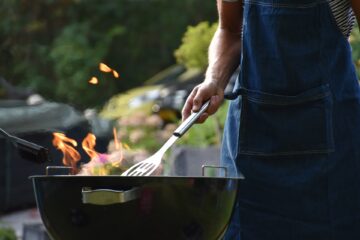Wisdom teeth removal is a relatively fast and simple procedure, but the effect it has on your body and diet until full recovery cannot be ignored. Your diet would change so much and this might cause some to lose weight. In as much as we are all aware that you can’t eat normally right after a wisdom tooth removal, there are some dishes that you just can’t let go of so easily – and maybe you won’t have to.
For example, can you eat mac and cheese after wisdom teeth removal? How long would you have to wait before eating normally? We will be discussing the recommended kinds of food to eat after wisdom teeth removal and also explaining the time frame for different stages of recovery.
Why mac and cheese is a popular choice
Mac and cheese is a popular choice for those recovering from wisdom teeth removal for several reasons. Firstly, the soft texture of mac and cheese makes it easy to chew, making it a perfect fit for the soft food diet that is typically recommended after surgery. Hard or crunchy foods can cause discomfort or even damage to the healing gums, so it’s important to stick to soft foods like mac and cheese to prevent any complications.
In addition to its soft texture, mac and cheese is also a good source of calories and protein, which are essential for healing. After wisdom teeth removal surgery, the body requires more energy and nutrients than usual to repair the damaged tissues and promote healing. A serving of mac and cheese can provide a good amount of calories and protein, making it a great option for those in recovery.
According to the United States Department of Agriculture (USDA), a cup of homemade mac and cheese made with whole milk and cheddar cheese contains about 420 calories and 17 grams of protein. Additionally, mac and cheese can be made with other high-protein ingredients such as chicken, shrimp, or beans, making it a filling and nutritious option.
Finally, the comforting taste of mac and cheese is another reason why it is such a popular choice during recovery. After surgery, patients may experience pain, swelling, or discomfort, and comfort foods like mac and cheese can help to alleviate these symptoms. The familiarity and psychological benefits of comfort foods can also provide a sense of comfort and well-being during a potentially stressful time.
Factors to consider before eating mac and cheese
Before consuming mac and cheese during recovery from wisdom teeth removal, there are several factors that should be considered. These factors include the timing of the surgery, the preparation and texture of the mac and cheese, and personal pain tolerance.
The timing of the surgery and the stage of healing is an important factor to consider before consuming mac and cheese. Depending on the type of surgery and the individual’s healing process, there may be different stages of recovery with varying dietary restrictions. For example, in the immediate post-surgery stage, patients are typically advised to consume only clear liquids or soft foods like soup, yogurt, and smoothies. As the healing progresses, soft foods like mac and cheese may be added to the diet, but hard or crunchy foods should still be avoided.
The preparation and texture of mac and cheese is also an important consideration. Mac and cheese can be made in a variety of ways, some of which may be more suitable for those recovering from wisdom teeth removal than others. For example, baked mac and cheese may contain crunchy or crispy toppings that could be difficult to chew and may cause discomfort. On the other hand, creamy stovetop mac and cheese may be a better option as it has a smoother texture and can be easier to chew.
Personal pain tolerance is another factor to consider before consuming mac and cheese during recovery. Some patients may experience more pain and discomfort than others after wisdom teeth removal, and therefore may need to avoid certain foods, including mac and cheese. In some cases, even soft foods like mac and cheese can cause discomfort if the gums are still sensitive or swollen. Patients should pay attention to their own discomfort levels and adjust their diet accordingly.
Can You Eat Mac and Cheese After Wisdom Teeth Removal?
Yes, you can eat mac and cheese after wisdom teeth removal if it is lukewarm and not spicy. Feel free to make a nice bowl of mac and cheese and snuggle up in front of your TV for a good movie. The only recommended type of food to eat 3 to 5 days after wisdom teeth removal is soft foods. Foods like mac and cheese, pancakes, pudding, ramen, and oatmeal are soft enough and require minimal chewing.
You can make the pasta even softer by overcooking it. Always remember to chew away from the extraction area and avoid hard, crunchy, spicy, acidic, alcoholic, carbonated, or sticky foods. These will hurt the extraction area and extend your healing time. It is also advised to avoid any form of suction as this might cause a dry socket. Finally, remember to rinse off with a saltwater solution after every meal to keep the area clean.
Keep in mind that people heal differently, so you might not need up to 3 days before you can eat mac and cheese.
Can You Eat Mac and Cheese After Oral Surgery?
Yes, you can eat mac and cheese after oral surgery if it is lukewarm and not spicy. As aforementioned, mac and cheese is one of the recommended meals to eat 3 to 5 days after wisdom teeth removal. It requires very little chewing and can be swallowed easily, making it easier on you and the extraction area. Other soft foods you can try are pudding, ramen, cake, soft cheese, and yogurt. Remember to wait for your mac and cheese to cool before digging in, you can also overcook it to make it even softer, and avoid spicing it up.
When Can I Eat Cheese After Wisdom Teeth Removal?
You can eat cheese 24 hours after wisdom teeth removal. Soft, melted, and cottage cheeses are recommended because they are soft, require little to no chewing, and have all the nutrients that will boost your healing. After at least two days, you can take your cheese with a balanced diet.
Read also: Can You Eat a Burger with Braces?
How Long After Wisdom Teeth Removal Can I Eat Normally?
You can go back to your normal diet 3 weeks after wisdom teeth removal. Although, this is dependent on the person and the factors surrounding your removal procedure. People heal differently – some take longer while others don’t. If you had to have stitches after the extraction or you had your lower wisdom teeth removed, then your healing might take longer. Otherwise, you would heal fast. Basically, if you feel like you can eat normally, then you should.
The first two days after your tooth extraction are crucial to your healing, it is best to stick to liquids and very light foods until you feel like you can eat something else. You can have soft foods like mac and cheese, pancakes and pudding after 48 hours and typically up to a week. If you feel better after that, you can move to medium foods, making the transition to hard foods easier. After two to three weeks, you should be getting ready to move back to your normal diet.
You should have completely recovered after 6 to 8 weeks and should be able to eat anything once again. Eat healthily and keep the extraction area clean during your recovery so it won’t take long to heal.
Read also: Can You Eat Steak with Braces?
Alternatives to traditional mac and cheese
While traditional mac and cheese can be a great option for those recovering from wisdom teeth removal, there are alternatives that may be more suitable for some patients. Some alternatives to consider include non-dairy and gluten-free options, homemade vs. store-bought mac and cheese, and other soft and nutritious foods to try.
Non-dairy and gluten-free options are important to consider for patients who may have dietary restrictions or sensitivities. There are many non-dairy options available such as vegan cheese or cashew cream that can be used to make a creamy and delicious mac and cheese. Similarly, gluten-free pasta can be used to make a gluten-free mac and cheese. These options can still be high in protein and calories, making them suitable for those in recovery.
When it comes to homemade vs. store-bought mac and cheese, there are pros and cons to each option. Homemade mac and cheese allows for more control over the ingredients and can be customized to suit individual tastes and dietary needs. Additionally, homemade mac and cheese can be made with more nutritious ingredients such as whole wheat pasta or vegetables.
On the other hand, store-bought mac and cheese can be a convenient option, especially for those who may not have the energy or ability to cook during recovery. Some store-bought brands may also offer options that are lower in sodium or higher in protein. However, it’s important to check the ingredients and nutritional information before purchasing, as some brands may contain preservatives or artificial ingredients.
Lastly, there are many other soft and nutritious foods that can be enjoyed during recovery in addition to mac and cheese. These may include mashed potatoes, scrambled eggs, soups, smoothies, and pureed fruits and vegetables. These options can be high in vitamins and minerals, which are important for the healing process.
List of Soft Foods to Eat After Wisdom Teeth Removal
Some of the soft foods you can eat after 48 hours of your wisdom teeth removal are:
- Pancakes
- Mashed potatoes
- Cake
- Eggs
- Pasta
- Popsicles
- Meatloaf
- Ramen noodles
- Mac and cheese
- Avocado
- Beans
- Oatmeal
- Squash
- Sliced and cut fish or meats
- Sweet potatoes
- Soft sandwiches
- Soft rice
- Steamed veggies
- Sour cream
- Soufflé
- Sherbet
- Soft bread
- Soft cheese
- Risotto
- Polenta
- Mousse
- Melons
- Mangoes
- Ground chicken/beef/turkey
- Doughnuts
- Custard
- Bananas
- Soggy cereal
- Pumpkin
- Tofu
- Casseroles
- Semolina
- Baby food
- Fish
Conclusion
A well-balanced diet and proper chewing is the key to a smooth recovery. Do your best to eat healthily, chew well, and transition from soft to medium and hard foods as you recover. Also, put in some effort to keep the extraction area nice and clean for a more healthy recovery.
- Can You Eat French Fries with Braces?
- Can I Eat Pringles With Braces?
- Can You Eat Steak with Braces?
- Can I eat Oreos with braces?
- Can You Eat Cereal with Braces?





